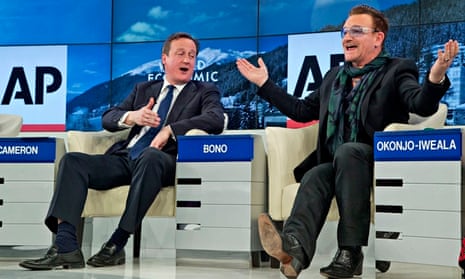As a plethora of high-profile speakers board their private jets and wave goodbye to Davos, only about 20% of them will be female. This has been the norm at the World Economic Forum for the last few years and shows little sign of changing.
As a regular on the speaker circuit, I’ve heard all kinds of excuses as to why there are so few women on stage at these events. The most popular include: there are no female experts in the field, we tried to get a woman to speak but we asked too late – she was already busy, and in the end we didn’t have time to approach people we don’t know already.
Quite frankly, these responses are getting boring. Event producers need to start putting together panels that represent the world we work in. We need to look at running an event the same way we would any other goal in the corporate world – with a clear strategy. Here are my top tips for creating a more female-friendly event:
1) Look back at your past events to see how diverse the speakers were. How many of the experts don’t fit the stereotype of the middle-class white male speaker? This gives you a number to start with and from there a goal to aim for. If your last event line-up included only one woman, then try to aim for two this time – that’s a 100% increase. Even if it is still pretty sad. You will probably be better off trying to address the percentage of women speakers. Most events get stuck at around the 22% mark, beat that and you’re already doing better than the majority.
2) Set your goals and ask yourself what mixture of people would be appropriate. Do you need to include 40% female speakers? At least two women per expert panel? I once went to an event where a panel of six white men discussed diversity, I have no idea how the organisers could plan that session so badly.
3) Event organisers often ask me if I know any female speaker and experts. I do, of course, and I know them because of my extended network that I built for years. Look further than your own contact list and dare to approach new people. If you only know male experts a good tip is to start looking for female speakers first when planning your event, then nearer the event you aren’t desperately trying to fill the quota. Also, if you find a woman you really want on your panel ask her if there are any women in her sector who she admires and would want to hear from. Use your panel to do your research.
4) Get online. Just because you don’t have the answer doesn’t mean there isn’t one. Social media is filled with people who want to help put together better and more diverse events, tell them what you’re looking for and ask for help. Don’t be afraid to be open about finding it difficult, people will remember that you’re trying to move away from the status quo and reward you for it.
5) Inviting people to submit papers for conferences traditionally attracts a lot of men. Men are better at putting themselves forward to speak at events, so don’t use this method alone to attract speakers. Be more creative and proactive in your research. Also, don’t just identify a potential female speaker and then ask her to submit a paper. Talk to her about what you look for in conference submissions, explain why you think she’d be good for the panel and offer her help. Women might need more encouragement to appear at your event the first time but if they feel supported by you they’ll be happy to appear again and you’ll be building your network for the future.
6) Bring your diversity strategy to the next level by organising public speaking training for all the speakers. It can be done in collaboration with public speaking coaches and creates a sense of belonging and co-branding. If also gives the speakers a stronger connection with your event, they got more from it than just profile, so they are more likely to share it online and talk about it.
After you’ve done all this, go back to point one and ask yourself if you achieved what you set out to. If you didn’t, go back and think what else you can do. And if you did, congratulations. You’re running an event that will last long into the future.
Sofie Sandell is an international speaker and writer focusing on leadership and social media. You find her on www.sofiesandell.com and on Twitter @soffi_propp

Comments (…)
Sign in or create your Guardian account to join the discussion